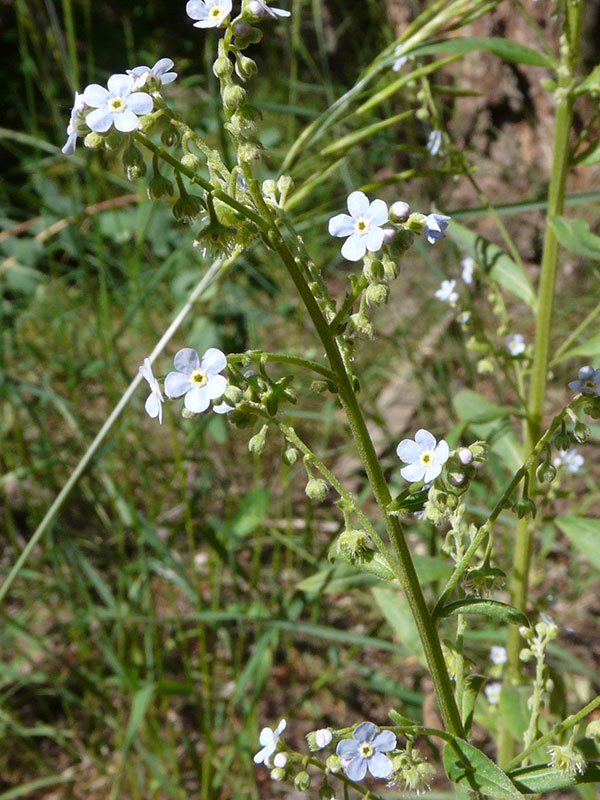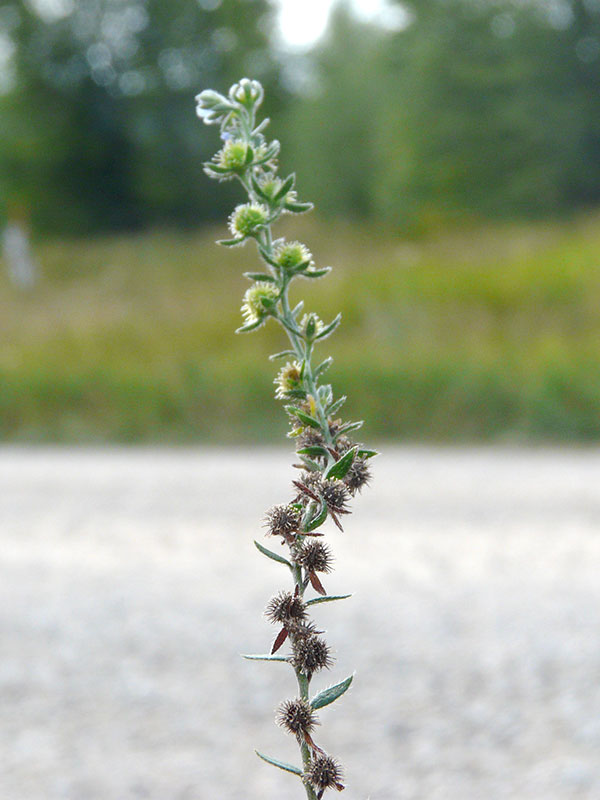Hackelia floribunda / many-flowered stickseed
Also known as: false forget-me-not, Davis mountain stickseed, showy stickseed
See also: Hackelia micrantha / Jessica sticktight
Hackelia floribunda and Hackelia micrantha are very similar. Indeed, if push came to shove, I would be hard pressed to swear that I have identified either one correctly on the site. Based on the web searches I did putting together this species, I am not, apparently, the only one with this problem. For all practical purposes, you could just call them both “stickseed” or “Hackelia“.
H. floribunda is considered a quite tall plant with relatively large leaves. This combination is somewhat unusual in the borage family. It grows from a simple caudex as a biennial or as a monocarpic, short-lived perennial. The plants emerge in spring as leafy clumps of alternate, smooth, lance-shaped leaves up to 8 inches long. Those low on the stem have petioles while the upper leaves – few in number – are sessile. The basal leaves usually wither by the start of flowering.
The inflorescence at the top of the stem is a cyme and relatively long compared to the size of the plant. The inflorescence stems are coiled at the tips with the flowers clustered on one side, i.e. facing the same direction. This is typical of the family. Each blue flower has five lobes with petal-like appendages at their bases, making the flowers funnel-shaped. The lobes surround a narrow central tube (yellow-green inside) which is slightly raised above the petal bases.
The fruits of the many-flowered stickseed are tiny, flattened nutlets. They are quite prickly, although the prickles are very short. They are along one edge only, a feature distinguishing this species from H. micrantha. The prickles are also a feature distinguishing all the stickseeds from the forget-me-nots (Myosotis spp.).
Descriptions of the habitat for the many-flowered stickseed cover the full range of possibilities, but there seems to be a unifying factor… it is most often found in areas which are wet in the springtime, e.g. in wet(ter) meadows, wetlands, and riparian areas.
| Color | |
|---|---|
| Family | |
| Blossom size | |
| Inflorescence size | |
| Inflorescence type | |
| When? | |
| Where? |


